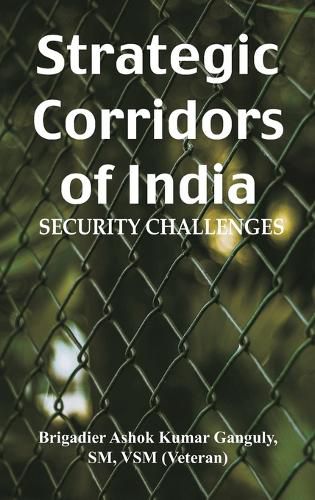Readings Newsletter
Become a Readings Member to make your shopping experience even easier.
Sign in or sign up for free!
You’re not far away from qualifying for FREE standard shipping within Australia
You’ve qualified for FREE standard shipping within Australia
The cart is loading…






This title is printed to order. This book may have been self-published. If so, we cannot guarantee the quality of the content. In the main most books will have gone through the editing process however some may not. We therefore suggest that you be aware of this before ordering this book. If in doubt check either the author or publisher’s details as we are unable to accept any returns unless they are faulty. Please contact us if you have any questions.
The Indian corridors can be classified as strategic, proxy and gray zone conflict areas, internal trouble zones and cross border sensitive zones. In North India, the corridors are Ladakh, Kashmir and Punjab, in Central India, the Red Corridor and East India Siliguri and Northeast Corridors. All of the corridors border China, Pakistan, Nepal, Bhutan, Bangladesh, and Myanmar geographically. These corridors hold strategic and geopolitical importance for India; the control over the corridor thus remains the dominant factor in maintaining the region's stability. All of India's strategic corridors hold significant importance and present challenges at both political and military levels. These corridors are interconnected primarily due to external pressures from hostile neighbours. Key players include Pakistan, China, and more recently, Bangladesh, along with Islamic states that maintain an anti-India stance. Internal factors also heavily influence these corridors. The Indian political system often lacks a cohesive vision, focusing instead on survival and vote-bank politics, where national interest is often overshadowed. All of these corridors are highly sensitive, with implications that could severely impact India's strategic standing and geopolitical stability. If not carefully managed, these corridors could trigger significant national security issues, with potential political, military, diplomatic, social, ethnic, and cross-border ramifications involving state, non-state actors of neighbouring countries and deep state strategies of countries that are apprehensive of India's position in the world order.
$9.00 standard shipping within Australia
FREE standard shipping within Australia for orders over $100.00
Express & International shipping calculated at checkout
This title is printed to order. This book may have been self-published. If so, we cannot guarantee the quality of the content. In the main most books will have gone through the editing process however some may not. We therefore suggest that you be aware of this before ordering this book. If in doubt check either the author or publisher’s details as we are unable to accept any returns unless they are faulty. Please contact us if you have any questions.
The Indian corridors can be classified as strategic, proxy and gray zone conflict areas, internal trouble zones and cross border sensitive zones. In North India, the corridors are Ladakh, Kashmir and Punjab, in Central India, the Red Corridor and East India Siliguri and Northeast Corridors. All of the corridors border China, Pakistan, Nepal, Bhutan, Bangladesh, and Myanmar geographically. These corridors hold strategic and geopolitical importance for India; the control over the corridor thus remains the dominant factor in maintaining the region's stability. All of India's strategic corridors hold significant importance and present challenges at both political and military levels. These corridors are interconnected primarily due to external pressures from hostile neighbours. Key players include Pakistan, China, and more recently, Bangladesh, along with Islamic states that maintain an anti-India stance. Internal factors also heavily influence these corridors. The Indian political system often lacks a cohesive vision, focusing instead on survival and vote-bank politics, where national interest is often overshadowed. All of these corridors are highly sensitive, with implications that could severely impact India's strategic standing and geopolitical stability. If not carefully managed, these corridors could trigger significant national security issues, with potential political, military, diplomatic, social, ethnic, and cross-border ramifications involving state, non-state actors of neighbouring countries and deep state strategies of countries that are apprehensive of India's position in the world order.